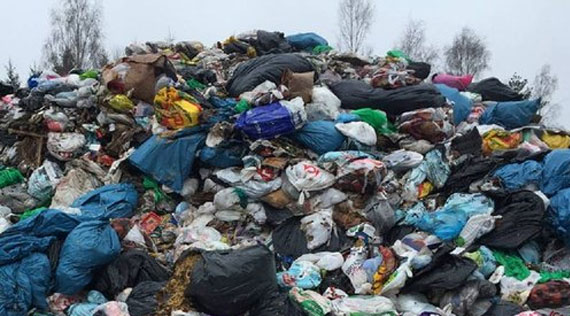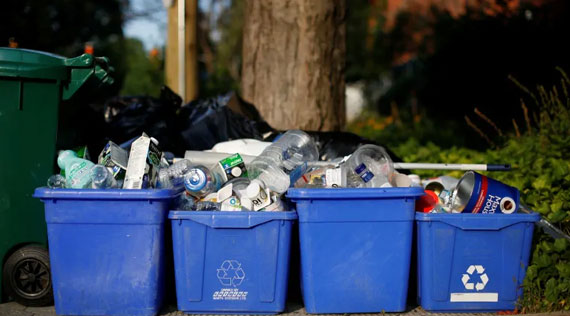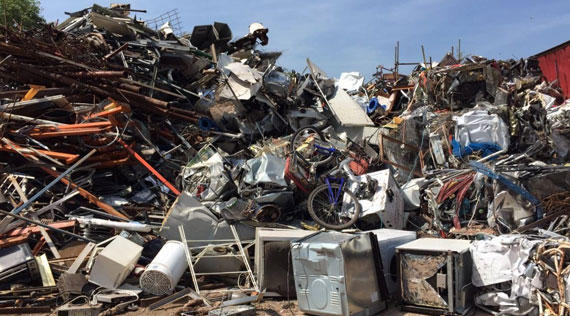- 86.6 million tons Raw steel production estimated in 2018
- 86 million tons Net shipments of steel mill products in 2018
Iron and steel scrap is a vital raw material for the production of new steel and cast-iron products. The steelmaking and foundry industries in the United States are highly dependent upon the ready availability of scrap from manufacturing operations and from the recovery of products that are no longer used or needed. The steel industry has been recycling steel scrap for more than 150 years.
Steel scrap recycling conserves raw materials, energy, and landfill space. The domestic steel industry recycles millions of metric tons per year of steel cans, automobiles, appliances, construction materials, and other steel products. The primary source of obsolete steel is the automobile. The remelting of scrap requires much less energy than the production of iron and steel products from iron ore. Consumption of iron and steel scrap by remelting reduces the burden on landfill disposal facilities and prevents the accumulation of abandoned steel products in the environment.
| Salient Statistics | 2014 | 2015 | 2016 | 2017 | 2018 |
|---|---|---|---|---|---|
| Production: Home scrap | 7.1 | 6.3 | 5.9 | 5.5 | 4.4 |
| Production: Purchased scrap | 62 | 54 | 53 | 55 | 56 |
| Imports for consumption | 4.2 | 3.5 | 3.9 | 4.6 | 4.8 |
| Exports | 15 | 13 | 13 | 15 | 18 |
| Consumption, reported | 58 | 51 | 50 | 50 | 51 |
| Consumption, apparent | 58 | 51 | 50 | 50 | 47 |
| No. 1 Heavy Melting composite price | 351 | 213 | 196 | 265 | 325 |
| Stocks, consumer, yearend | 4.1 | 4.2 | 4.3 | 4.4 | 5.1 |
In 2018, the total value of domestic purchases of iron and steel scrap (receipts of ferrous scrap by all domestic consumers from brokers, dealers, and other outside sources) and exports was estimated to be $19.7 billion, approximately 25% more than the $15.7 billion in 2017. U.S. apparent steel consumption, an indicator of economic growth, increased slightly to 103 million tons in 2018. Manufacturers of pig iron, raw steel, and steel castings accounted for about 92% of scrap consumption by the domestic steel industry, using scrap together with pig iron and direct-reduced iron to produce steel products for the appliance, construction, container, machinery, oil and gas, transportation, and various other consumer industries. The ferrous castings industry consumed most of the remaining scrap to produce cast iron and steel products, such as machinery parts, motor blocks, and pipe. Relatively small quantities of steel scrap were used for producing ferroalloys, for the precipitation of copper, and by the chemical industry; these uses collectively totaled less than 1 million tons.
During 2018, raw steel production was an estimated 86.6 million tons, up by 6% from 81.6 million tons in 2017. Net shipments of steel mill products were an estimated 86 million tons, 4% higher than those in 2017.
| Tariff: Item | Number |
|---|---|
| No. 1 Bundles | 7204.41.0020 |
| No. 1 Heavy Melting | 7204.49.0020 |
| Shredded | 7204.49.0070 |
Recycled iron and steel scrap is a vital raw material for the production of new steel and cast iron products. The steel and foundry industries in the United States have been structured to recycle scrap, and, as a result, are highly dependent upon scrap. One ton of steel that is recycled conserves 1.1 tons of iron ore, 0.6 tons of coking coal, and 0.05 tons of limestone.
Overall, the scrap recycling rate in the United States has averaged between 80% and 90% during the past decade, with automobiles making up the primary source of old steel scrap. Recycling of automobiles is nearly 100% each year, with rates fluctuating slightly owing to the rate of new vehicle production and general economic trends. More than 15 million tons of steel is recycled from automobiles annually, the equivalent of approximately 12 million cars, from more than 7,000 vehicle dismantlers and 350 car shredders in North America. The recycling of steel from automobiles is estimated to save the equivalent energy necessary to power 18 million homes every year.
The recycling rate for 2014, the most recent year data was published, was approximately 98% for structural steel from construction, 88% for appliances, 71% for rebar and reinforcement steel, and 70% for steel packaging. The recycling rates for appliance, can, and construction steel are expected to increase in the United States and in emerging industrial countries at an even greater rate. Public interest in recycling continues, and recycling is becoming more profitable and convenient as environmental regulations for primary production increase.
Recycling of scrap plays an important role in the conservation of energy because the remelting of scrap requires much less energy than the production of iron or steel products from iron ore. Also, consumption of iron and steel scrap by remelting reduces the burden on landfill disposal facilities and prevents the accumulation of abandoned steel products in the environment. Recycled scrap consists of approximately 58% post-consumer (old, obsolete) scrap, 24% prompt scrap (produced in steel-product manufacturing plants), and 18% home scrap (recirculating scrap from current operations).
Import Sources (2014–17): Canada, 75%; Mexico, 7%; United Kingdom, 7%; Sweden, 5%; and other, 6%.
Steel mill production capacity utilization last peaked at 80.9% in April 2012; however, that utilization rate was surpassed in November 2018 when the rate reached 81.2%. Scrap prices fluctuated during 2018, with a high of about $378 per ton in May and a low of about $299 per ton in September. Composite prices published by Scrap Price Bulletin for No. 1 Heavy Melting steel scrap delivered to purchasers in Chicago, IL, Philadelphia, PA, and Pittsburgh, PA, averaged about $329 per ton during the first 9 months of 2018. Exports of ferrous scrap increased in 2018 and primarily went to Turkey, Mexico, and Taiwan, in descending order of export tonnage. The value of exported scrap increased to an estimated $5.9 billion in 2018 from $4.0 billion in 2017.
Global raw steel production was forecast by one organization to increase by 3.9% in 2018 and by 1.4% in 2019, spurred by investments in industrialized nations and economic improvement in emerging economies. Steel demand in developed economies was expected to increase by only 1.0% in 2018 and 1.2% in 2019. In the United States, demand increased owing to tax and regulatory changes and increased investment. The automotive and construction sectors were expected to experience overall moderate growth.
An estimated 2.0 million tons of direct-reduced iron was used in the United States in 2018 as a substitute for iron and steel scrap, up from 1.9 million tons in 2017.
Get an instant offer on your damaged car

Get an offer instantly
Just tell us a bit about your car and boom, there's your offer.

Free pickup
You have seven days to accept our offer and schedule pickup.

Get paid on the spot
Our pickup partner will do a quick inspection, and hand you a check.
More from Recycling
- 267.8 million tons of municipal solid waste generated in 2017
- 46% is the statewide recycling rate in 2018
- 59% is the highest recycling rate recorded in the Central Virginia Waste Management Authority
- 29% is the lowest rate recorded in the Virginia Peninsulas Public Service Authority
- 17.2% Colorado’s recycling rate improves in 2018
- 178564008 Metric Tons of Scrap exported in 2017
- $ 97315662168 Valued Scrap exported in 2017


